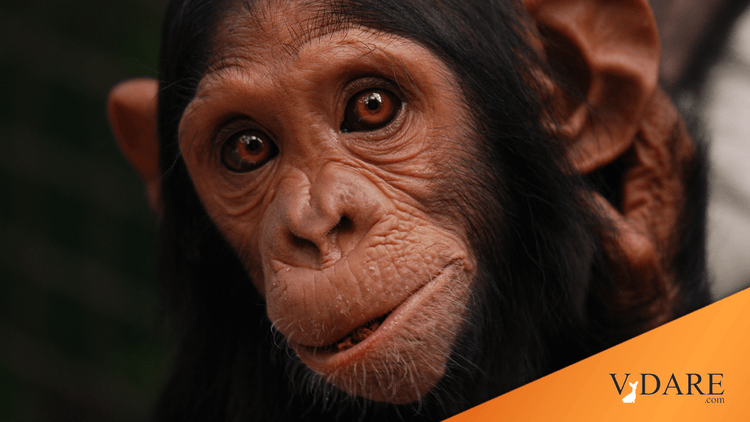
The Prevalence of Mansplaining vs. the Rarity of Apesplaining
07/24/2018
As you all know, Mansplaining is the worst thing ever. For example, if you have a broken device and no clue how to fix it, on Youtube there are no doubt multiple videos of volunteer guys (and they are almost always guys, unless they are doing it for money), who will show you how to fix your gizmo.
It’s wonderful that there are so many people out there who do this for basically no compensation.
Men like to explain stuff.
For example, countless philosophers and scientists have explained to us that one big difference between Man and Monkey is in our stronger ability to learn. And that is no doubt true. But these teachers seem to be somewhat overlooking the human urge to teach.
Chimpanzees, in contrast, do not feel the urge to teach much at all. (We’re chimps, not chumps appears to be their attitude toward Apesplaining.) I give Carl Zimmer a hard time now and then, but his new book She Has Her Mother’s Laugh has some good stuff on the fairly profound division between the strong Mansplaining urge and the weak Apesplaining urge. From 2011:
“It’s certainly true that teaching comes naturally to us humans,” Carl Zimmer blogs for Discover magazine. “There’s no culture on Earth without teachers. But just because something’s easy doesn’t mean it’s not special. And in the animal kingdom, teaching is exceedingly rare. In fact, it’s not clear that any other animal can teach. I know this may come as a surprise, but it does so because we tend to mix up teaching and learning. A young chimpanzee can learn how to smash nuts on a rock by watching an older chimpanzee in action. And when she grows up, her own children can learn by watching her. But in these situations, the students are on their own. They have to watch an action and try to tease apart the underlying rules.”
